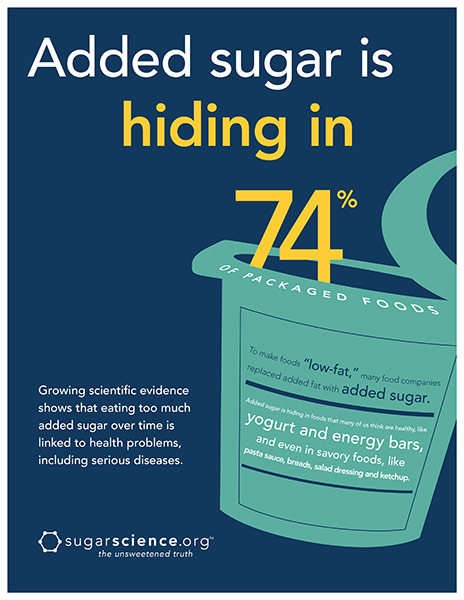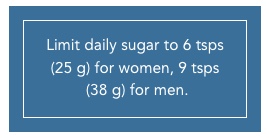Video update 1-28-23
I’m just going to presume he is addressing those over the age of two who have properly formed microbiota development and leave it at that as the information is too valuable.
Are you struggling to lose weight , affect key blood parameters and improve metabolic health?
If so you might find the following videos as helpful and interesting as I did.
I will soon list bullet points to pay attention to in each video but off the top of my head a few monumental issues that I recognized as being of major importance.
- You’re not sick because you’re fat, you’re fat because you’re sick.
- Insulin is now the bad guy. Weight loss occurred by reducing insulin.
- Fructose not glucose is a key driver affecting liver health.
- There are both fat and thin people with diabetes (helps explain a lot of paradoxes) and no it is not diet per se (good-bye diet fads). Key for me, I did not hyper-focus on carbs and I certainly didn’t cut them out entirely. I’ve since watched two more of his videos so I can’t remember if it is included here but he perfectly illustrates how glycemic index is a load of crap. My take; another attempt to say a calorie is a calorie, remember if they can’t defeat the issue, they will co-opt it and distort it (pretzel logic).
- Exactly how sugar affects mitochondria as a toxin.
- 8 fundamentals that can not be ignored (glad autophagy made the list) and if you can control those you will be playing tennis at 110.
- The alternate pathway of sugar metabolism that taxes the liver.
- The hateful 8. Eight chronic diseases that are fueling this current metabolic pandemic.
The videos are listed in chronological order from most recent to oldest. The last video addresses mental health and addiction in addition to the main topic, I found that very enlightening as well.
Update 1-23-23:
I’ve since watched many videos on the topic and have reduced the most pertinent info to the first two videos including a ten minute quick take.
Update 1-26-23:
I’ve added more videos on the topic, keeping them here for your convenience.
How much is okay?
Expert panels worldwide have made consistent recommendations on daily sugar intake. The American Heart Association (AHA) recommends:
no more than 6 teaspoons (25 grams) of added sugar per day for women and 9 teaspoons (38 grams) for men. The AHA limits for children vary depending on their age and caloric needs, but range between 3-6 teaspoons (12 – 25 grams) per day.
That is in line with the World Health Organization’s (WHO) recommendation that no more than 10% of an adult’s calories – and ideally less than 5% – should come from added sugar or from natural sugars in honey, syrups and fruit juice. For a 2,000-calorie diet, 5% would be 25 grams.
Limit daily sugar to 6 tsps (25 g) for women, 9 tsps (38 g) for men.
Yet, the average American consumes 17 teaspoons (71.14 grams) every day. That translates into about 57 pounds of added sugar consumed each year, per person.
Children and teens are particularly at risk. The U.S. Dietary Guidelines for Americans recommend limiting total intake of discretionary calories, including both added sugars and fats, to 5% –15% per day. Yet children and adolescents in America obtain about 16% of their total caloric intake from added sugars alone.

Dr Robert Lustig, Professor of Paediatric Endocrinology at the University of California. He’s a leading public health expert who has long been exposing the myths of modern medicine and the food industry. His passion is communicating how sugar and ultra-processed food is fuelling the chronic disease epidemic that we are all facing today.
Begin here…
Ten minute quick take…
Reduced to the very basics….
How to Cut Sugar and Processed Foods | Living Well (edited) – Hosted by Tara Parker-Pope, founding editor of Well.
Alternavita: All you need to know (critical info in a nutshell)..... by focusing exclusively on these foundational health and immune development issues up to 90% of chronic conditions can be eliminated.
WHO STATEMENTS: 2017 Millennium Goal
- Breastfeeding,
- food (security)
- and water security (sanitation)
are major protective factors against malnutrition and critical factors in the maturation of healthy gut microbiota, characterized by a transient bifidobacterial bloom before a global rise in anaerobes. Early depletion in gut Bifidobacterium longum, a typical maternal probiotic, known to inhibit pathogens, represents the first step in gut microbiota alteration associated with severe acute malnutrition (SAM). Later, the absence of the Healthy Mature Anaerobic Gut Microbiota (HMAGM) leads to deficient energy harvest, vitamin biosynthesis and immune protection, and is associated with diarrhea, malabsorption and systemic invasion by microbial pathogens. A therapeutic diet and infection treatment may be unable to restore bifidobacteria and HMAGM.
Researchers found that malnourished children’s microbiota failed to follow the healthy pattern they identified in healthy children. The microbiota of malnourished children is immature, lagging in development behind that of their healthy peers. Supplementing these children’s meals with widely used therapeutic foods that increase calories and nutrient density reduces deaths from malnutrition, but it does not fix their persistent microbiota immaturity.
“Perhaps more insidious than slowing growth is malnutrition’s effect on less visible aspects of health, including impaired brain development and dysfunctional immunity, which follow these children throughout their lives”.
The Father of The Microbiome
Dr. Jeffrey Gordon
SIBO
SIBO can cause severe malabsorption, serious malnutrition and immune deficiency syndromes in children (non breastfed) and adults.
Prognosis is usually serious, determined mostly by the underlying disease that led to SIBO.
Immunizations
The WHO recommends that immunization or treatment be orally administered due to economic, logistical and security reasons. Furthermore, this route offers important advantages over systemic administration, such as reducing side effects, as the molecules are administered locally and have the ability to stimulate the GALT immune responses (Levine and Dougan, 1998; Neutra and Kozlowski, 2006; Bermúdez-Humarán et al., 2011).
Infections
For ANY infectious or parasitic disease to start, it is ALWAYS a requisite that the host suffer IMMUNODEFICIENCY. At the same time, infectious and parasitic diseases themselves cause additional IMMUNE SUPPRESSION and more MALNUTRITION. This immune suppression is SECONDARY to the accumulation of free radicals, especially oxidizing species, that occurs during and after infectious and parasitic diseases.
Clinical Aspects of Immunology and Biochem J.
Current IBD Research 2016
Currently available treatments for IBD, which target the systemic immune system, induce immunosuppression, thereby exposing the patient to the risk of infections and malignancy. The interplay between the gut and the systemic immune system determines the final effect on target organs, including the bowel mucosa. Inflammatory bowel diseases (IBD) are associated with an altered systemic immune response leading to inflammation-mediated damage to the gut and other organs.
Clinical & Translational Immunology (2016)
Gastroenterology and Liver Units, Department of Medicine, Hebrew University-Hadassah Medical Center, Jerusalem, Israel
Most importantly, the immune modulatory agents used today for IBD do not achieve remission in many patients.
Not all IBD patients benefit from currently available drugs. Young people with IBD do not want to be on long-term drug therapy. Oral immune therapy, while not yet studied in large cohorts of patients, may provide an answer to this unmet need.
Clinical & Translational Immunology (2016)
Gastroenterology and Liver Units, Department of Medicine, Hebrew University-Hadassah Medical Center, Jerusalem, Israel
Tolerance
Tolerance is the ability of the immune system to ‘see’ and respond appropriately. Without galactose (a necessary sugar) the immune system can not 'see'. Your immune system would not be able to function without galactose Your body wouldn’t know which cells are
“good” and what cells are “bad.” Your body wouldn’t know who the invaders were and which ones should be attacked by antibodies. As you will learn the importance of these ‘sugars’ in gut microbiota health is a rapidly expanding field of research, only recently
discovered, including HMO's (human milk oligosaccharides).
Why galactose?
Milk sugar aka lactose has been shown to be very beneficial for the human body though unlike sucrose, lactose is made up of glucose and galactose. There is no fructose in lactose. It is a healthy disaccharide sugar. Galactose is known as the “brain sugar” and supports brain development of babies and children. Galactose helps triggers long-term memory formation. Galactose has been shown to inhibit tumor growth and stop its spread, particularly to the liver. This beneficial sugar can also enhance wound healing, decrease inflammation, enhances cellular communication, and increases calcium absorption.
What does immune ‘tolerance’ mean in simple language?
Immune tolerance, or immunological tolerance, or immunotolerance, is a state of unresponsiveness of the immune system to
substances or tissue that have the capacity to elicit an immune response in a given organism. The Th1 cytokine profile is vital for clearance of certain organisms and ancillary immune activity, and a limiting effect on this cytokine profile may result in reduced chances for overcoming infections especially intra-cellular organisms residing within macrophages.
Effective clearance will depend on appropriate macrophage activation (which occurs through IFN≥ release by Th1 and NK cells) and production of nitric oxide. If this pathway is disrupted IFN≥ secretion is blocked, impairing macrophage activation.
Persistent blockade of these inhibitory receptors has lead to the breakdown in immune self tolerance, thereby increasing susceptibility to autoimmune or auto-inflammatory side effects, including rash, colitis, hepatitis and endocrinopathies.
Many drugs may cause checkpoint blockade toxicity including pharmaceutical drugs termed ‘immuno therapy’ by pharmaceutical companies, these include Mab drugs and cancer treatments.
Checkpoint Inhibitor–Induced Colitis: A New Type of Inflammatory Bowel Disease?
Madeline Bertha, MD MS, corresponding author1 Emanuelle Bellaguara, MD, Timothy Kuzel, MD, and Stephen Hanauer, MD
ACG Case Rep J. 2017; 4: e112.
Published online 2017 Oct 11. doi: 10.14309/crj.2017.112
PMCID: PMC5636906
PMID: 29043290
The Elderly
Mammal milk is required for enhanced phagocytosis as shown by research, especially in the elderly. Whole fat mammal milk can actually restore phagocytosis in senescent cells in the elderly. Phagocytosis, by which immune cells ‘eat’ bacteria or infected cells, is one of the mechanisms that help to resist infections. Lactic acid bacteria strains like acidophilus also increases phagocytosis.
